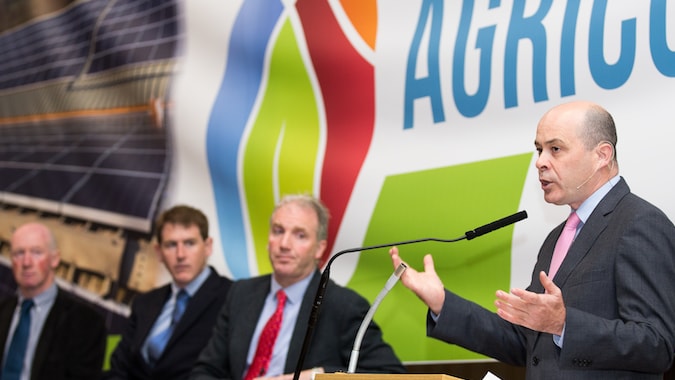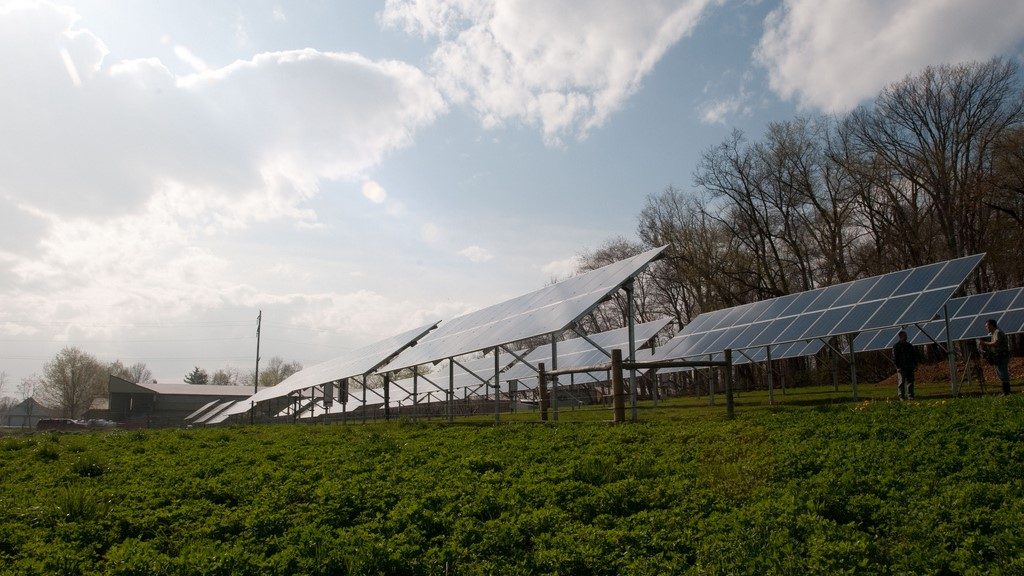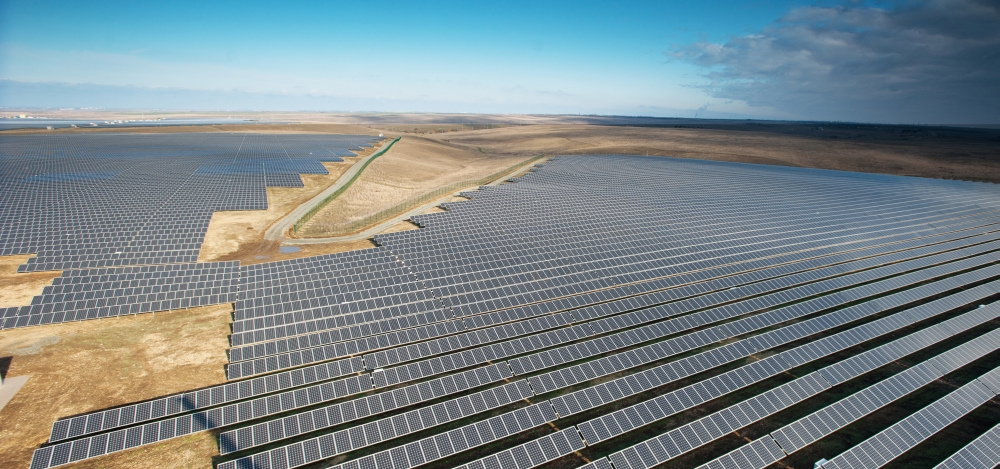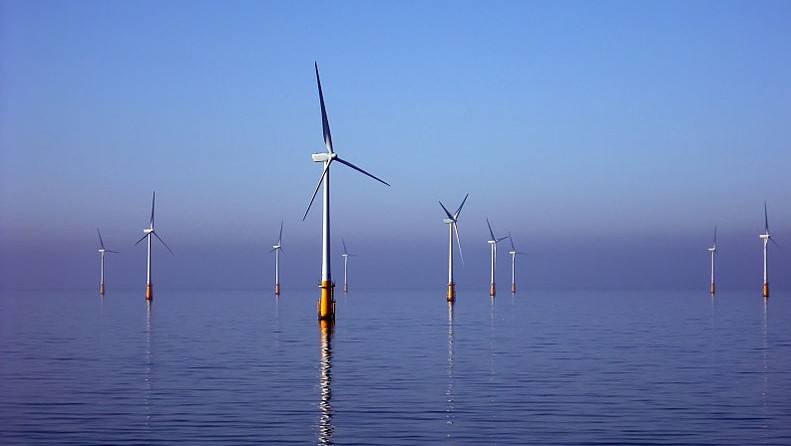Ireland’s solar industry: From a bang to a whimper

August 30th, 2017
The Solar Energy Future conference in Cork at the start of 2016 was a roaring success.
The event brought together over 350 interested parties, encouraged by the recent drop in solar technology costs and the rise in policymakers’ interest in green energy.
“The conference was upbeat and positive and exciting, and all those things,” says Michael Quirk, a farmer and then chair of the conference’s organiser, Energy Cork. Interest was so great that they received applications for double the conference’s capacity.
By late 2016, however, solar had begun to turn sour as little to no progress was made in relation to state support for the industry.
Spirits were further dampened at the Solar PV conference at the Aviva Stadium last November by the announcement that a second public consultation on a new financial support scheme for renewable energy would not arrive until mid-2017.
‘Slog-type Mentality’
The public consultation has still yet to be announced, with Environmental Minister Denis Naughten, TD failing to mention solar once in his opening speech at this month’s Energy in Agriculture conference in Gurteen Agricultural College.
Although the consultation is now expected to be launched in the coming days, a concrete support framework is not expected until early to mid-2018 at the earliest.
The lack of clarity on future support for the industry has led to disquiet among all rungs of the industry ladder, says Mr Quirk, who is in the process of setting up a solar farm on his own land.
“The atmosphere had completely changed to a sort of a slog-type mentality,” he told The Green News. “It’s just a fight now to get an answer, to get policy, and to get projects built,” he added. “There doesn’t seem to be the same hope for this to happen.”

Minister Naughten at Energy in Agriculture Conference, August 2017 Photo: Energy in Agriculture
Tsunami’ of Grid Applications
There are further issues with bottlenecks in the electricity grid queue due to speculative applications by large developers. Speaking at last year’s Solar PV conference, ESB Networks’ Clare Duffy said that a “tsunami” of applications has resulted in queues at many transmission nodes.
Between them, ESB and EirGrid have now received grid connection applications for almost 6GW gigawatts (GW) of potential energy production, with applications rocketing in 2016. Ireland’s total annual energy generation capacity from all sources is around 10GW.
The Commission for Energy Regulation (CER) has said that the scale of applications “far exceeds what can be practically and effectively delivered”. The regulator said that there is “significant uncertainty” about how many of these projects will go ahead.
It is now also widely accepted within the solar industry that the whole pipeline of projects won’t be built out. Founder and chairman of the Irish Solar Energy Association (ISEA), David Maguire, expects only 30 to 40 per cent of projects to go ahead. “In reality, what will actually get deployed is considerably less than that headline figure,” he says.
A Future for Solar
Yet, Mr Maguire says there is still a bright future for solar and sees a great opportunity to take advantage of Ireland’s blank canvas as one of the last EU members to develop a solar industry. “That late mover advantage enables us to deploy solar using best practice and learning lessons from those that have gone before us in Europe in terms of policy design,” he says.
The ISEA estimates that 2GW of solar power – well beyond the current installed capacity of 3MW – could create 7,300 jobs and meet seven per cent of the country’s electricity demand. This would go some way to help meet Ireland’s EU target of generating 16 per cent of our energy need from renewables by 2020.
Mr Maguire’s own company, BNRG Renewables, hope to generate 60 jobs after signing a partnership with French developer Neoen to develop 23 solar projects in Ireland. He cautions, however, that a “stable regulatory framework” and broad public support are key to ensuring the long term viability of the industry. “What we are seeking here is something that isn’t tokenism, and is something that can deliver a net community gain,” Maguire says.
The Sustainable Energy Authority of Ireland (SEAI) is working with the Department of Communications, Climate Action and Environment (DCCAE) on models to encourage community participation in, and ownership of, solar projects.
The SEAI already supports a number of community-led renewable projects, and Dr Eimear Cotter, the organisation’s Head of Low Carbon Technologies, says a bottom-up approach is key to winning local support communities. “That’s really the way to get the engagement of communities on all sorts of renewable energy,” she adds.

Solar panels at Seldom Rest Farms Photo: US Department of Agriculture
Farmers Beware
Yet, there is still some way to go, according to James Murphy, the Renewables Chairman at the Irish Farmers’ Association (IFA). While welcoming potential new revenue streams for farmers, and the chance to be more intimately involved in reducing Ireland’s carbon footprint, he urges farmers to think long and hard before signing an option agreement with solar developers.
Option agreements – usually for up to five years – can be exercised or not, depending on whether planning permission is granted. The IFA estimates that up to 20,000 acres of farmland are currently under some form of contract with developers.
Mr Murphy is concerned that farmers are now tied into agreements which will never go ahead, and could miss out on other more realistic offers for use of their land, such as forestry or property development.
Despite clear indication that many projects are unlikely to progress, Mr Murphy says that farmers are still being approached. “If we are maxed out, why are we still approaching landowners? Why am I still getting calls from guys saying ‘I have been approached by a company, what should I do?’” Murphy asks.
“As we speak those calls are still coming to the IFA on a weekly basis… I think that’s something the industry needs to look at.”

Perovo Solar Park Photo: Activ Solar
Larger Development Trend
The majority of applications for solar developments are seeking parcels of around 20 to 30 acres, enough to produce 5MW. However, Mr Murphy says that farmers are now being approached to sign agreements for larger plots of land – up to 150 acres in some cases.
For example, in late January 2017, Offaly County Council granted conditional permission for Clonin North Solar Farm, potentially the largest solar farm in Ireland at 238 acres.
Michael Quirk says that this move is driven by the uncertainty over future Government support for the industry. He says that larger developers are not expecting generous support, and are now looking at “savings in scale”.
“They’re trying to go as big as they possibly can,” he added. “So you lose the whole idea of local power supplying local people, and now you get what happened in the wind industry.”
Swift Action Needed
Without swift policy movement and greater clarity on the future of solar developments, Mr Murphy agrees that solar may go the way of wind energy, and become disconnected from the people who may live near proposed solar farms.
Community groups against solar have already been set up in Wexford and Cork, the counties with the most solar farm applications and cases are increasingly coming before An Bord Pleanála.
Just this week, another group in Tipperary lodged an appeal to An Bord Pleanála over the granting of planning permission for a 143-acre solar farm near Roscrea.
“[There is] still a lot of reticence, still a lot of animosity, a lot of concern among communities once they see a planning permission sign go up,” says the IFA’s James Murphy. “That shouldn’t be the case.”
For the moment, industry players, big and small, await government action which will help decide the future shape of solar in Ireland.
[x_author title=”About the Author”]






